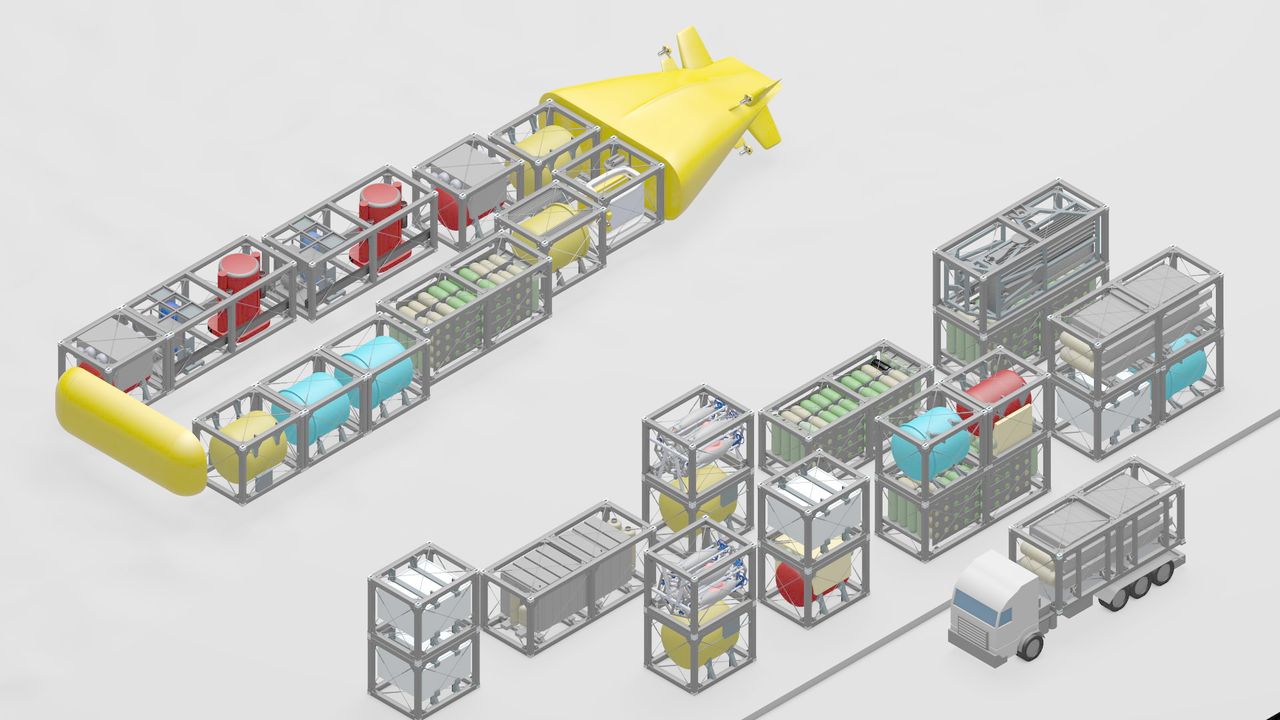In Part 1 of this long thought exercise, I discussed whether diesel submarines (middle size or mini) would make sense for Ukraine, Bulgaria and Romania in the Black Sea.
The Russian-Ukraine War has seen the rapid development of drone warfare on both sides - everything from tiny FPS UAV drones delivering grenades to larger drones conducting strategic attacks on infrastructure.
The current situation in the Black Sea: Ukraine, a country without warships bigger than minesweepers, has pinned the major fleet units of the vaunted Russian Black Sea fleet to Sevastopol (where they will be further destroyed by Storm Shadow missiles) and Novorossiysk. This is primarily due to the historic use of suicide Unmanned Aerial Vehicles (UAVs) and Unmanned Surface Vessels (USVs), alongside strategic strikes by ATACMS small ballistic missiles, Storm Shadow cruise missiles and Ukrainian Special Forces units. These have also been degrading Russian naval facilities, ground-based air defences, airfields and essential infrastructure in Crimea and Russian territories bordering the Black Sea.
The main priority for Ukraine now (May 2024) in the Black Sea is to restrict the remaining Black Sea Fleet (BSF) units to Novorossiysk Naval Base. Ukraine has proved that it can loop UAVs and USVs around the Crimean peninsula to attack Novorossiyk - a one-way journey of about 700km, in the face of heavy Russian GPS and satellite communication jamming.
This long distance does mean that these USVs have to pass relatively close to Crimea, which makes them vulnerable to interdiction from Russian aviation operating from Crimea. This is why some Ukrainian USVs are now carrying missiles eg. by modifying AA-11 Archer AAMs to lock onto airborne targets, even while the USV is moving.
The BSF’s three remaining Improved Kilo subs are relatively new, while the older Kilo Alrosa is likely un-operational and cannot leave Sevastopol. If the Improved Kilos were to ‘break out’ of Novorossiyk - snort transit to somewhere to the North of Yalta in Crimea, then switch to batteries, they could stay underwater, evade Ukraine/NATO surveillance and attack the vital shipping lanes from Ukraine's Port of Odesa.
Ukraine recently started Project FURY, a "hackathon" (intense information gathering) to rapidly develop AUVs that will probably have loitering persistence, and AI ability to detect and attack surface and subsurface targets, alone or as a swarm. These AUVs should be hard for Russian ASW helicopters and submarines to detect, as they can hide at extreme depths, ‘pop up’ at intervals to get GPS fixes and instructions, lay mines, or even attack targets with torpedoes or ASMs.
Ukraine's allies are likely to contribute to Project Fury and would certainly be interested in the real war results.
| Image may be NSFW. Clik here to view.  |
| Image: TKMS/Naval News --- |
TKMS recently started production of the MUM (modifiable Underwater Mothership) in 2023 - at 25m long, this long-endurance XLUUV could perform a form of submarine barrier patrol. Situated 500km (or more) from its base, MUM might only rise to near the surface to extend a comms antenna, to send an alert when it detects a target and positively identifies that it is an enemy warship (from visual and passive sonar recognition). Once MUM receives an order to attack, it selects the optimal weapon for the environmental conditions and fires. The MUM's modular design enables this XLUUV to swap out modules and it can also be disassembled into containers (see below) for a train or truck ride.
| Image may be NSFW. Clik here to view.  |
| Image: TKMS --- |
| Image may be NSFW. Clik here to view.  |
| Image: DRASS DS-8 via HI Sutton --- |
The Ronda AUV is rumoured to be the "Autonomous Attack Submarine" that was mentioned when DRASS signed an MOU with Indonesian shipbuilder PT Republik Palino. According to Sutton, Ronda is an AUV version of the DRASS DS8 swimmer delivery vehicle, a 9-metre, 4-tonne vehicle that can transport 8 combat divers and 1,000kg of equipment 50 nautical miles, with a maximum depth of 80 metres, and a speed of 6.5 knots.
DRASS conducted sea trials of the DS8 in Tuscany in late 2023, as well as a calendar shoot (I kid you not!). See the video below.
An AUV version of the DS8 is quite feasible for a Black Sea nation as the SDV can be built at the DRASS Romania production facilities - thus not infringing on the Montreux Convention, with crew facilities replaced with batteries. DRASS has recently partnered with Italian company INTECS for AI to “bolster surveillance and performance in the underwater domain” - which could mean that an autonomous system is currently being developed.
| Image may be NSFW. Clik here to view.  |
| Image: DRASS via H I Sutton -- |
Polish news site ESSA reported in February 2024 that Sweden was sending the new Torpedo 47 SLWT (SAAB Lightweight Torpedo) to Ukraine. The replacement for the 400mm Torpedo 45 that equips Swedish (and Singaporean?) submarines and naval vessels, the Torpedo 47 is a versatile weapon that has a 20km range and can be launched from subs, ships, and helicopters, or over the side of a pier. The Torpedo 47 is a 2.8m long torpedo that should fit into a Ronda AUV. But as the Torpedo 47 does not require torpedo tubes to launch, it can simply be shackled to the outside of a Ronda AUV.